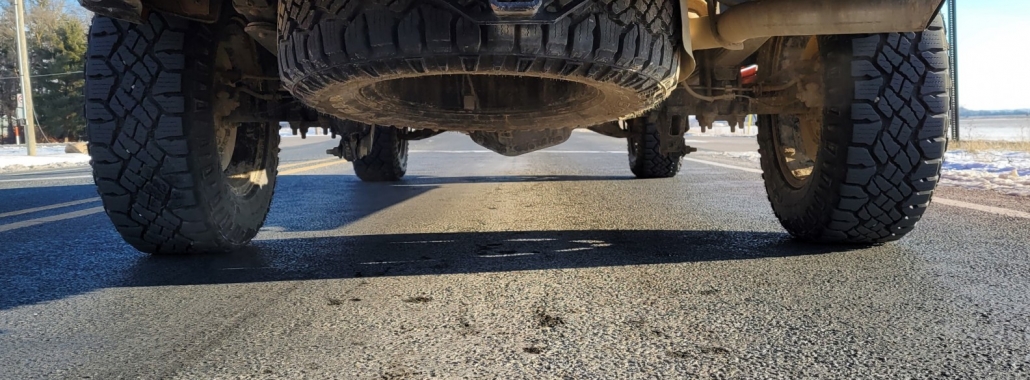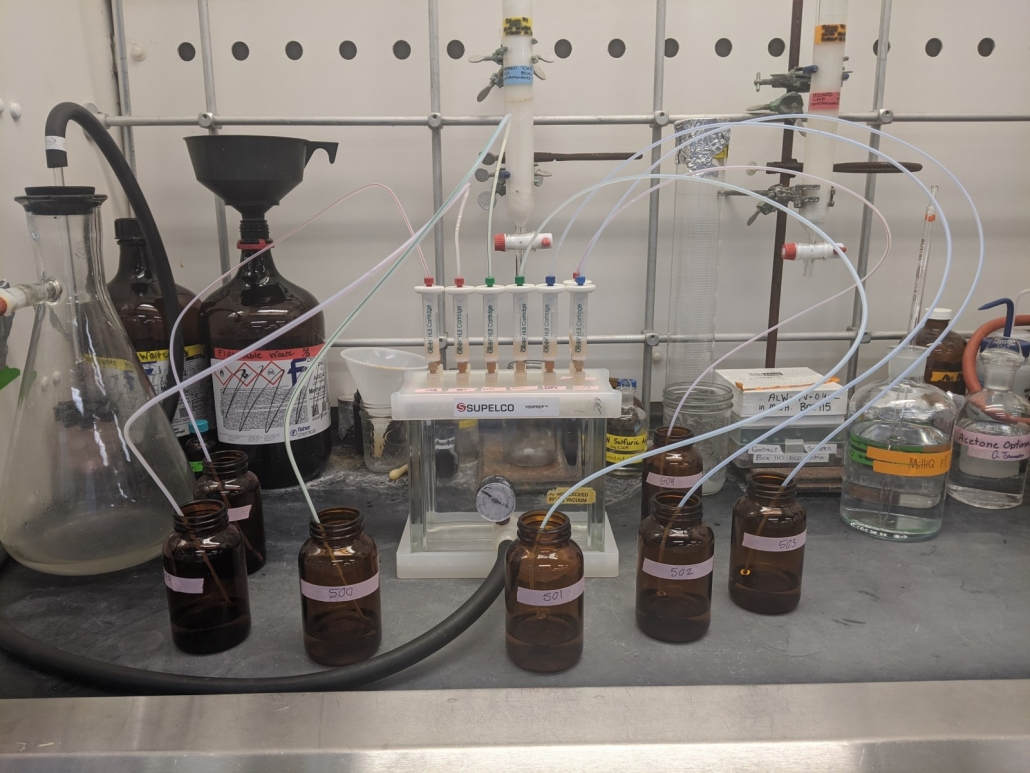A tire chemical that was poisoning fish out West has been discovered in two Lake Ontario tributaries.

Credit: Lester Graham, Michigan Radio.
This story was published through the Great Lakes News Collaborative. Funded by the Charles Stewart Mott Foundation, the collaborative’s four nonprofit newsrooms — Bridge Michigan, Circle of Blue, Great Lakes Now at DPTV and Michigan Radio — aim to elevate discussion, amplify the voice of Michigan residents and produce action that protects the region’s waters for future generations. While Mott provides financial support, our public service journalism is produced independently.
By Sharon Oosthoek, Great Lakes Now — January 11, 2022
For 20 years, the mystery behind what was killing coho salmon in Seattle’s urban creeks seemed unsolvable.
Every time it rained, fish would begin swimming in circles, floating belly up just a few hours later. Scientists looked at heavy metals, various chemical contaminants, water temperature and oxygen levels, but none of these things were the problem. So when toxicologists at Washington State University published research in the journal Science in late 2020 unmasking the culprit, their findings made headlines.
The guilty party was an until-then-unknown chemical called 6PPD-quinone – a breakdown product of another chemical added to car tires to prolong life. It was running off from road surfaces into creeks during rainstorms.
Now researchers in Ontario have discovered 6PPD-quinone in two Toronto waterways, the Don River and Highland Creek, both of which empty into Lake Ontario.
“When the coho salmon study came out, we already had samples from the Don and Highland Creek, and we thought let’s take a look and see if we can find 6PPD-quinone,” said Cassandra Johannessen, an environmental chemist who examined the samples as part of her master’s degree at Ontario’s Trent University.
Johannessen’s original goal was to look for a tire additive called hexamethoxymethyl?melaminen –a potential fish toxin which she did find in the samples. When she went back and looked for 6PPD-quinone, it was also present in both rivers.
In the Don, which runs next to the busy Don Valley Parkway, she measured the chemical at more than twice the concentrations that killed the Seattle salmon and levels remained elevated for up to 14 hours after rainstorms. Johannessen and her team published their findings in a pair of studies over the summer and fall.
She was working from samples collected by the province during and after rainstorms in 2019 and 2020 and did not look for dead fish in the river at the time of the storms. The Toronto Region and Conservation Authority received no reports off mass die-offs.
While the Don is home to coho salmon, the fish are not native to the area. Coho and chinook – Pacific species – were successfully introduced to the Great Lakes region for recreational fishing in the 1960s. These species were meant to replace Atlantic salmon, which became locally extinct in 1898. (In 2006, Atlantic salmon were reintroduced.)
Today, the most common native fish in the Don and Highland Creek are minnow-sized species, including creek chub, blacknose dace and long nose dace, and white suckers. These fish are pollution-tolerant and can withstand the unnaturally high water temperatures in the rivers.
Even though they can handle some pollutants, it’s likely 6PPD-quinone is affecting them and indeed all aquatic wildlife in the rivers. As Johannessen points out, a contaminant does need to kill outright to have negative consequences. Reduced reproduction and size are among the non-lethal effects of various chemical pollutants.
In any case, 6PPD-quinone is not the only tire-related contaminant found in waterways. In the Seattle study, researchers found water runoff from tires contains more than 2,000 chemicals.
“There are so many chemicals in tires, and we don’t know how they break down and where they end up,” said Johannessen. Plus, playgrounds and some sporting equipment are made from crumbled recycled tires, so traffic may not be the only source of these contaminants.

Cassandra Johannessen’s lab tested Don River and Highland Creek samples for 6PPD-quinone. (Photo courtesy of Cassandra Johannessen)
So now what?
Researchers don’t yet know how long 6PPD-quinone persists in the environment or exactly how it kills fish, but studies are underway on both sides of the border.
Early last year, the National Contaminants Advisory Group of Fisheries and Oceans Canada announced special funding for researchers to study the impact of 6PPD-quinone and other tire by-products on Canadian salmon, trout and whitefish.
“This is a brand-new chemical contaminant and not all labs can analyse it,” said Jonathan Ruppert, an ecosystem and climate scientist with the Toronto Region and Conservation Authority, whose mandate is to safeguard watershed communities in the Toronto region.
The TRCA already monitors for various contaminants in rivers flowing into Lake Ontario and, with the help of Trent University’s labs, plans to add 6PPD-quinone to its list this year.
In Michigan, the Department of Environment, Great Lakes and Energy began sampling last summer for 6PPD-quinone after seeing the results of the Washington and Ontario studies. Aquatic toxicologist Sara Nedrich led a project to examine surface water runoff at 17 different rivers and streams across the state, all of which empty into Lake Michigan.
Only 10% turned up detectable levels, all of which were far below what the University of Washington researchers determined was fatal to salmon.
Nedrich and her team also collected samples from rainwater in road curbs and roadside puddles from five sites across the state. While 6PPD-quinone was present at all five sites at levels slightly higher than the positive river samples, none was high enough to qualify as deadly. This summer, Nedrich plans to sample more intensely in a yet-to-be-determined high risk site.
The U.S. EPA’s Great Lakes National Program Office is also aware of the Washington and Ontario studies, but 6PPD-quinone is not part of its long-term contaminant monitoring programs.
“To our knowledge, the Great Lakes region is not experiencing salmon (or other fish) kills that prompted the investigations in Washington State,” said EPA spokeswoman Taylor Gillespie.
Meanwhile, the Washington State researchers who originally pinpointed 6PPD-quinone as the problem are talking with the tire industry and hope manufacturers will come up with a replacement preservative.
Another potential solution involves biofiltration. It’s a simple fix that amounts to creating rain gardens or natural depressions in the land to which stormwater is directed. This slows water flow, giving vegetation and sediment time to filter pollutants before the water discharges into local rivers or migrates to groundwater.
“The major takeaway is that this is a new area of research. We have much to learn and we are still scratching the surface,” said Johannessen. “But international studies are beginning to show tire-derived chemicals are ubiquitous in urban water systems.”


